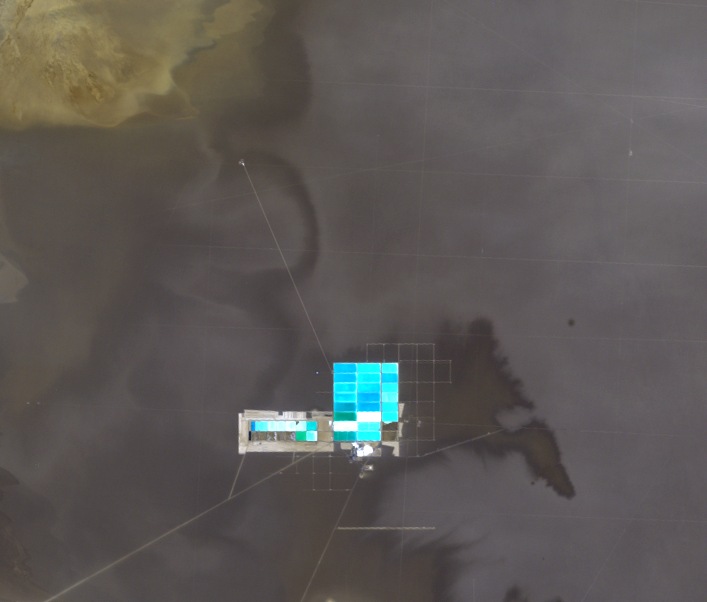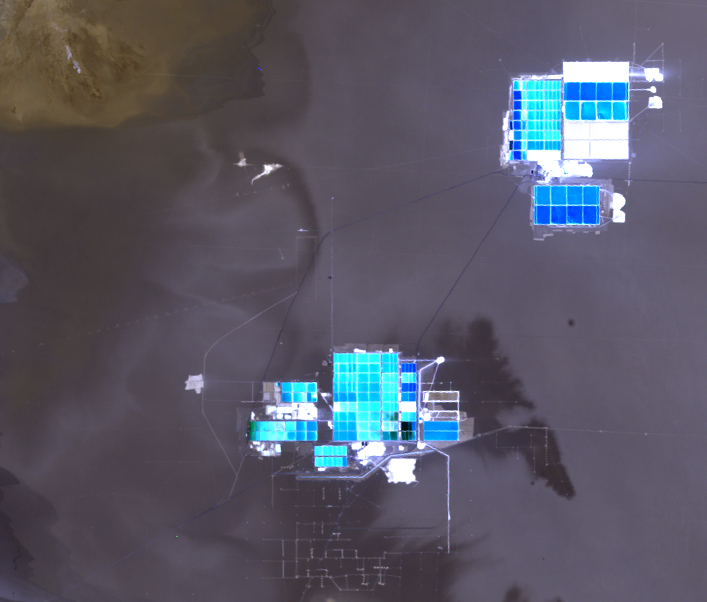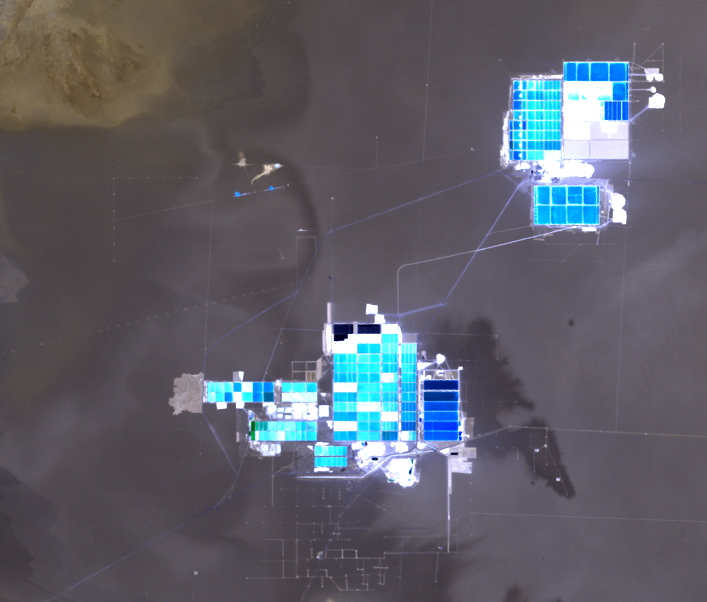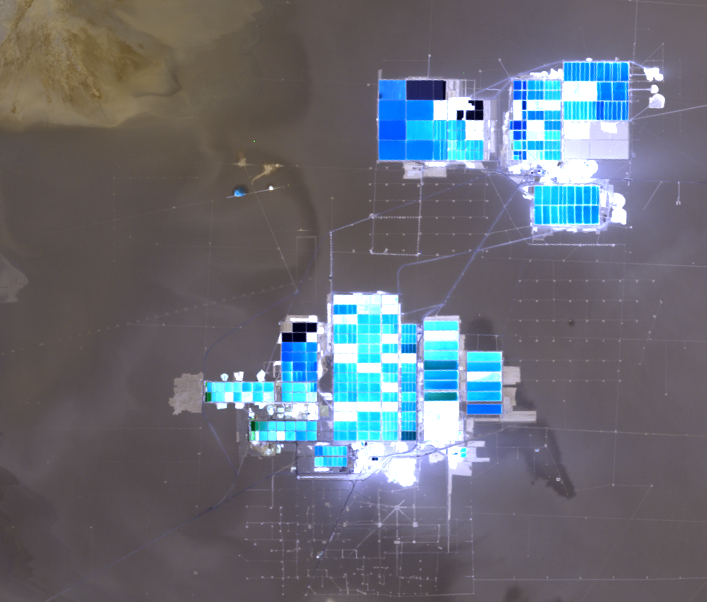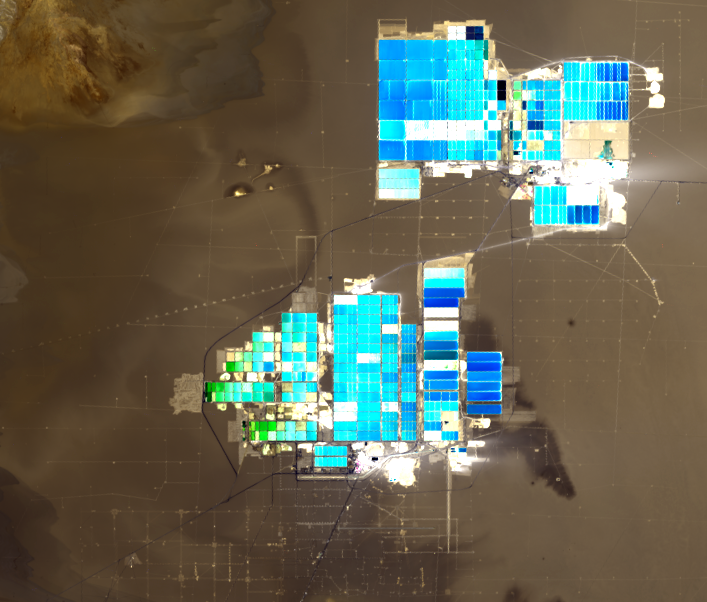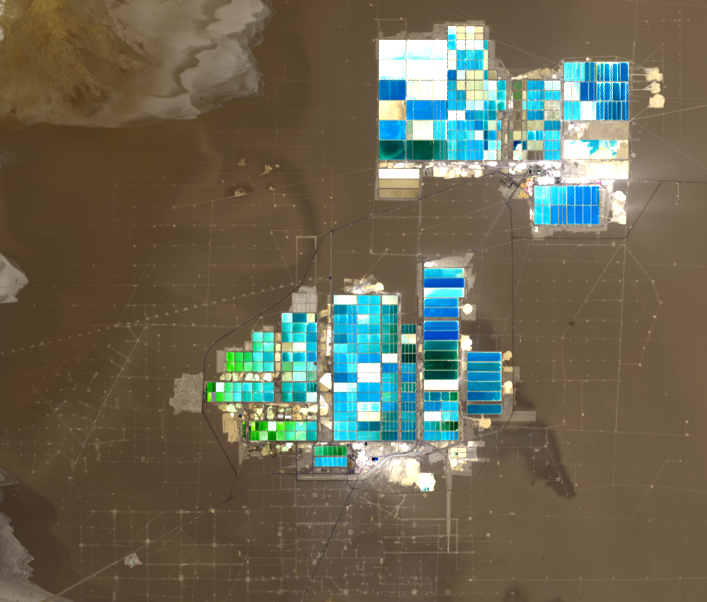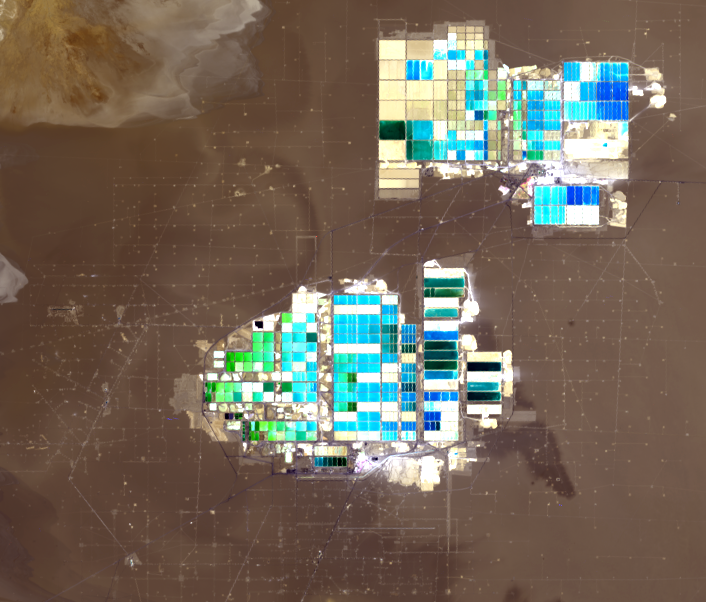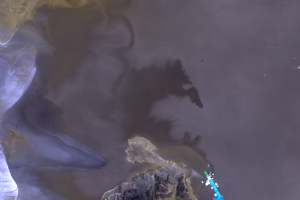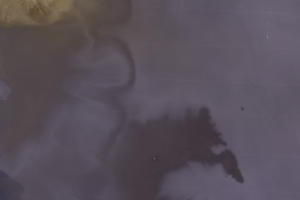The brine, which at first looks like dirty slush, is pumped to the surface and sent via canals to several evaporation ponds. The dry, windy climate makes for efficient evaporation and leaves behind concentrated salts, from which lithium can be extracted.
The ponds, which are about 10 feet deep, vary in color in the images because of varying amounts of salts in the water. The brighter ponds contain more concentrated salts. The deep blue ponds indicate more water content.
The lithium is reduced to a concentrate and then shipped by tanker truck to a refinery on the coast in Salar del Carmen. From there, it’s on to the rechargeable battery you depend on to power your smartphone.



